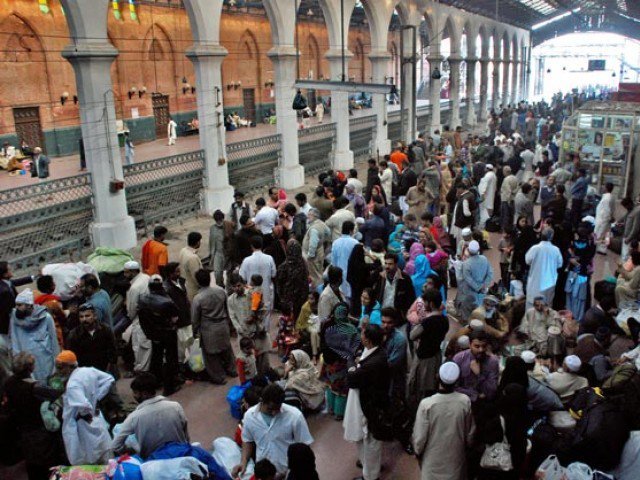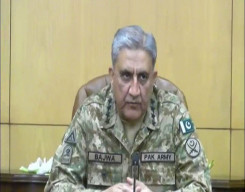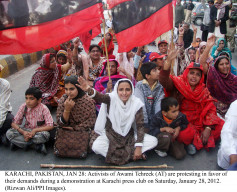
ISLAMABAD: Finally, it has been announced that the population census will take place in March 2017. According to the rules, the population census should take place after every ten years. The last two took place in 1998 and 1981.
The one in 1998 took place after 17 years and the new one will take place after 19 years, a clear violation. But it is hard to assign blame when three governments are involved.
Population census — the larger picture
The main reason attributed to the absence of census was terrorism and non-availability of armed forces to protect the field workers.
Before delving into some of the main issues of the census, mainly technology, nomenclature and constituency delimitation, it is important to first understand its methodology.
The population census is done in two stages; in the first stage, the house survey (enumeration) is done; this is a physical survey of houses, be it a bungalow or a hut — all are included.
Urban areas are divided in the hierarchy of district, charge, circle and block. These charges, circles and blocks are numbered and the census is published with these abstract numbers
While rural area hierarchy is fairly established and known: district, tehsil, Qanungo, Moza, Gaon.
If one wants to find out the population and other data about any location in the rural area, you can simply read it off in the relevant district book of the census.
For urban areas, this is not the case. You cannot find the population of Gulberg in Lahore or Nazimabad in Karachi or any other location known by its common name. You will have to visit the local census office that will tell you the numbers of charges and circles that are included in the location of your choice.
Limitations
However, this gives rise to the issue of constituency delimitation which is based on population census. Population census directly affects constituencies (national, provincial and local) and governmental financial allocations.
Many argue and suspect that the dilly dallies in conducting population census originates from these factors. Status quo favours some and is detrimental to others. Hence transparency, accuracy and data processing efficiency is of very high impact and significance.
Population and voter strength of constituencies varies by a wide margin. It violates the spirit and intention of the one man-one vote principle. In Punjab, there is a constituency with 198,000 voters as against another with voter strength of 482,801.
Sixth Population Census: PBS finalises arrangements
In Sindh and Punjab, it is even worse. Sheikhupura and Vehari got 4 constituencies each while Shekhupura has a population of 3.3 million as opposed to Vehari with a population of 2.09 million.
Take whatever criteria either of population or of voter strength, there is no consistency or uniformity.
Let us now come to the third issue of technology. As I know, the census data collection methodology remains almost the same using printed forms on which data is to be written by pen
Transferring this data to computer is an expensive and time consuming job, prone to error.
However, tablets can be used, where data collection and processing are integrated. Tablets instantaneously send data to the database and reports could be compiled in a matter of two weeks. Last census based on the printed form took two years to publish.
In a bid to resolve cost issues, tablets could also be rented from United Nations Population Fund who could buy and supply it to the country’s statistics division. Tablets with GPS provision can do wonders in processing census data by integrating it with the geographic information system (GIS).
The US Census Bureau has launched a census and survey software product (CSPro), which has been made available in public domain, works on tablets and smart phones. It claims that more than 100 countries are using this software.
In 2011, UN Habitat provided technical and financial assistance to Pakistan’s population census organization (PCO) to enable it to undertake web-GIS based census. Millions of dollars of hardware and software input was provided. However, with the termination of the programme, the whole infrastructure remains unutilised.
Pakistan’s Planning Commission did its best to involve PCO and develop a physical planning model around it to be shared with wider user groups including other government departments.
But the PCO did not move. Institutional decay in our country has become endemic; most aid projects end up in this kind of fiasco.
Hopefully, the census results would be made available online preferably in GIS format like it is done by the US census department and it is available for free. However, this is yet another story as to how difficult it is for users to deposit the requisite fee for the priced data in the treasury account of PCO.
Political leadership while handling larger issues should also look into these smaller yet important ones.
Reformers have a lot to do in this country than just focus on corruption. In fact data transparencies can a go long way towards eliminating deviations.
The writer has until recently been member energy of the Planning Commission.
Published in The Express Tribune, February 13th, 2017.
Like Business on Facebook, follow @TribuneBiz on Twitter to stay informed and join in the conversation.














































COMMENTS
Comments are moderated and generally will be posted if they are on-topic and not abusive.
For more information, please see our Comments FAQ